Lunar II Observing Program Coordinator:Cliff Mygatt |
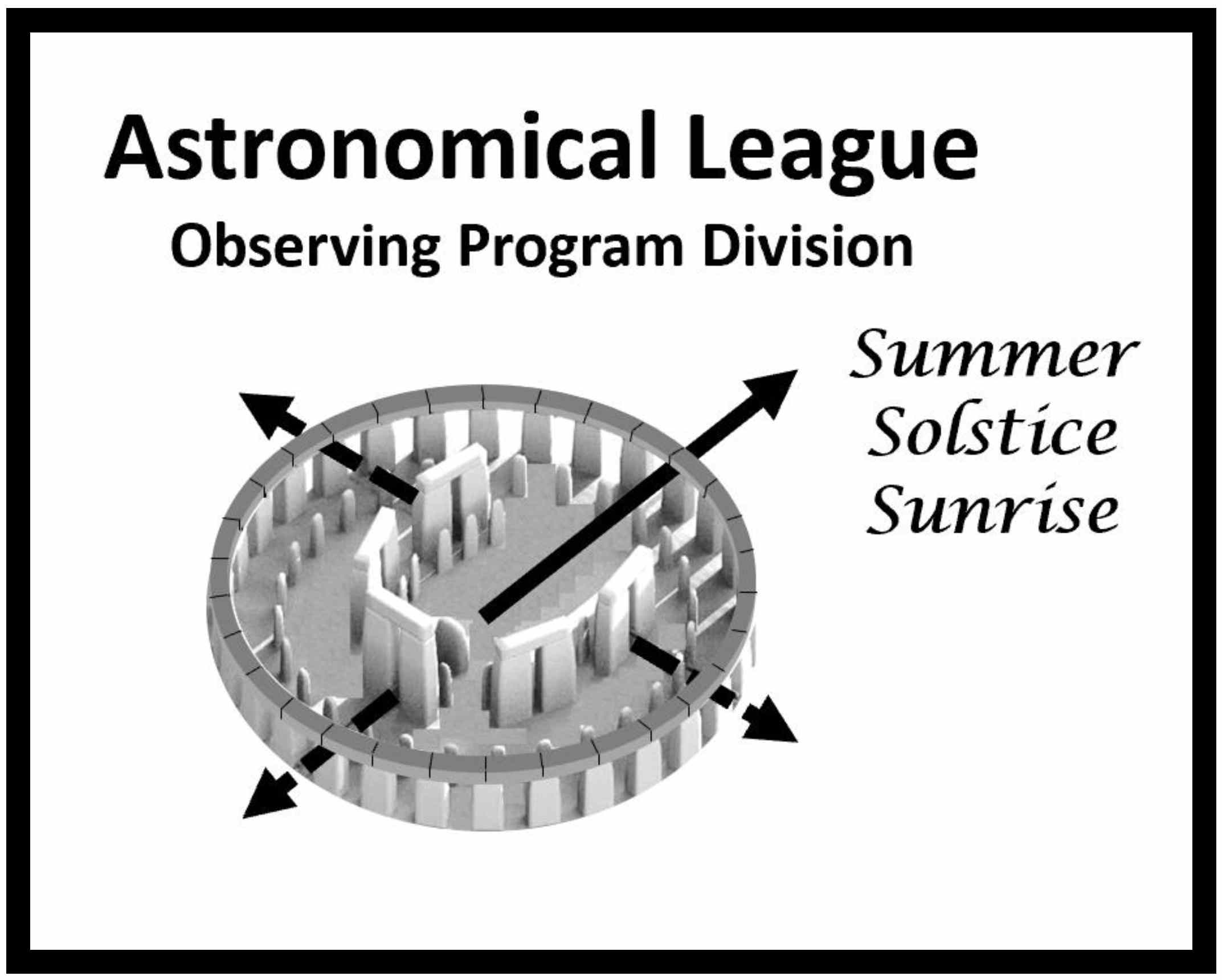 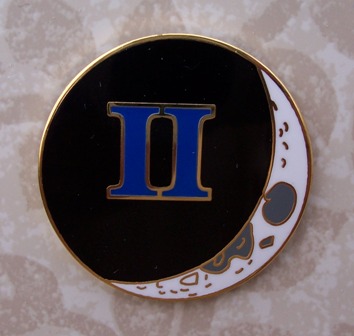 |
Introduction
| The Moon is the nearest celestial object in our observable universe and is always a favorite at star parties. It was the target of past manned and robotic exploration missions, and it is likely that public interest will be stimulated again as new lunar missions are announced and executed. Many avid lunar observers voiced their desire for a second, more challenging program to follow the very popular Lunar Observing Program. In response the Astronomical League formed a program for experienced lunar observers called Lunar II. Lunar II program goals include stimulating and maintaining a continued interest in lunar observing. This new program will also require participants to make at least 100 observations of the Moon. It is designed to help members improve their observing skills and expand their knowledge of the visible lunar surface. It is similar in some ways to the Messier Observing Program and it requires participants to go farther than the Lunar Observing Program. For example, prominent features like the Sea of Crises and Tycho Crater will be revisited, observing them in greater detail and/or in varied sun-lighting. New targets, such as the Cordillera Mountains have been added. Some observations will be relatively easy, such as finding and describing the Sea of Isles; others, like hunting domes and rilles will be more challenging and require greater observing skill. Participants will also create a small, basic map of the visible face of the Moon. | 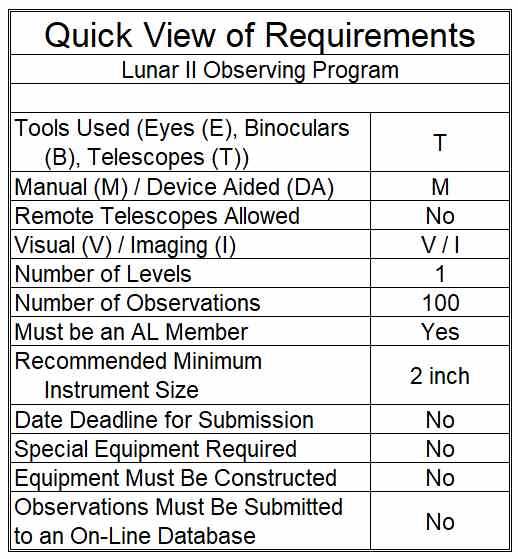 |
Requirements and Rules
This certification is available to members of the Astronomical League, either through their local astronomical society or as members at large. If you are not a member and would like to become one, check with your local astronomical society, search for a local society on the Astronomical League Website, or join as a Member-at-Large .
To earn a Lunar II Observing Program certificate and pin you must:
3. Keep a detailed log of your observations. a. Maintain a log similar to those required by most other League Observing Programs. Logs may be kept on paper or in an electronic file. b. Notes for all observations should include:
|
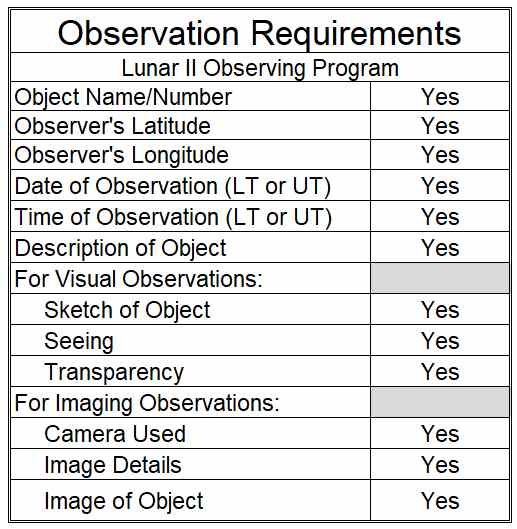 |
Submitting for Certification
| To submit for the Lunar II Observing Program certification:
1. Submit a COPY of your observing log or images to the Lunar II Observing Program Coordinator for review and certification (they will not be returned to you). You may send a printout, a scanned document, a text file, or image files. 2. Include your name, Lunar Observing Program certificate number (or mention your Lunar program submission), mailing address, email address, telephone number, and the name of your local astronomy club or society. If you are a Member at Large, identify your status. 3. Include if you are submitting for the imaging award. Indicate where the images can be found for review. 4. If you wish to have your Lunar II Observing Program certificate and pin forwarded to your local club or society for presentation, please include the name and postal address of the person to send it to. |
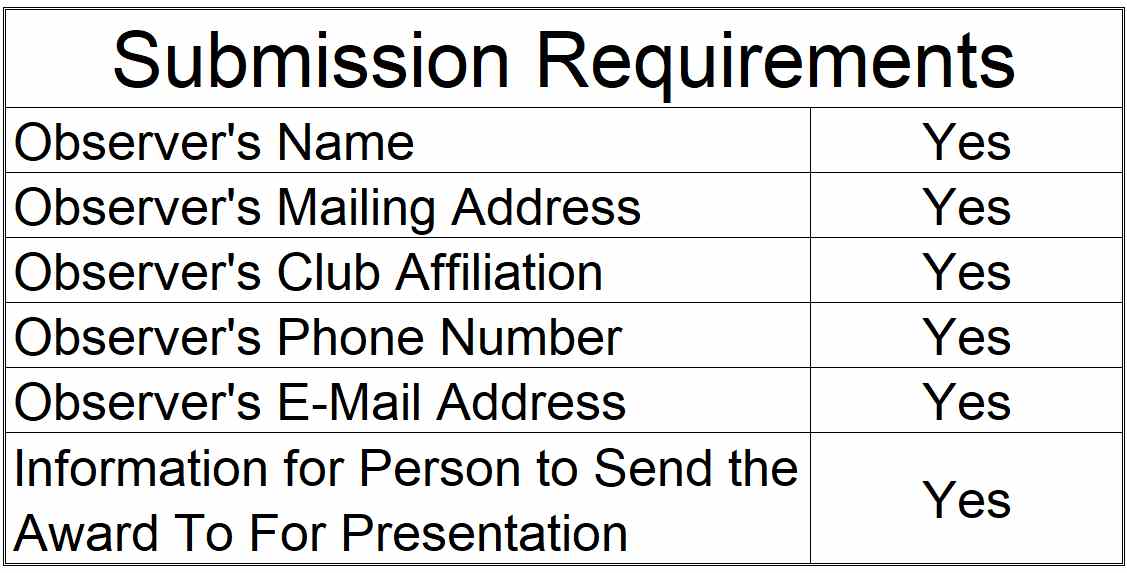 |
Upon verification of your submission and of your active membership in the Astronomical League, your recognition (certificate, pin, etc.) will be sent to you or to the awards coordinator for your society, as you specified. Your name will also appear in an upcoming issue of the Reflector magazine and in the Astronomical League’s online database. Congratulations. Good luck with your next observing challenge.
For questions, comments, or submissions, contact the Lunar II Observing Program Coordinator.
Lunar II Observing Program Coordinator:Cliff Mygatt |
Notes:
Looking for more Lunar Information and Opportunities?
- The Astronomical League Web Store has a great manual available with information for all three AL Lunar Observing Programs. It is called Carpe Lunam, and is available here.
- There is a certificate available to those who have completed the Lunar Observing Program called the Lunar Evolution Certificate. For more information, go to the web page by clicking here.



